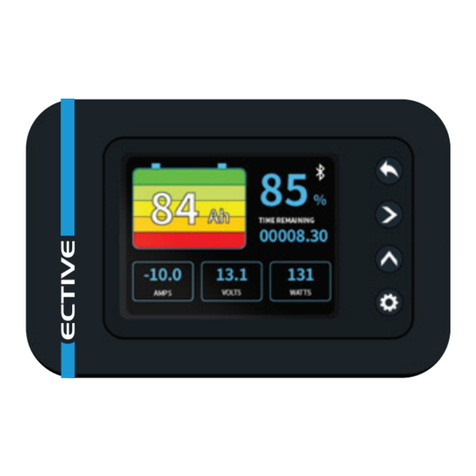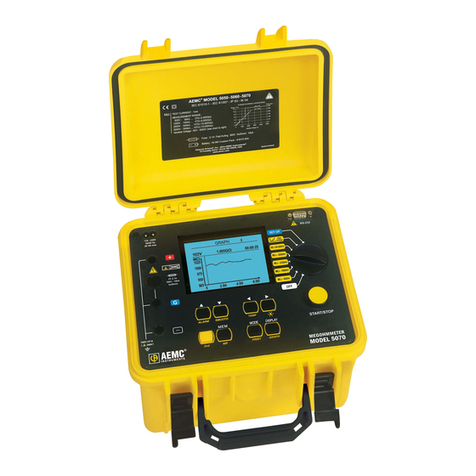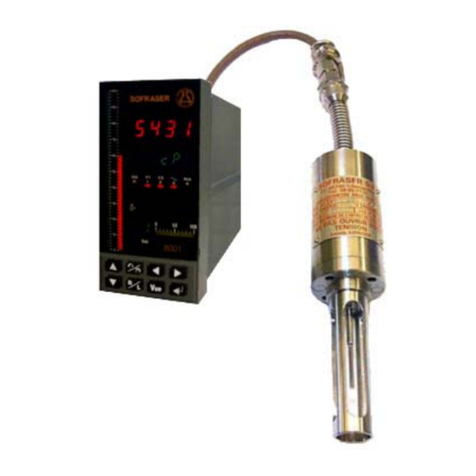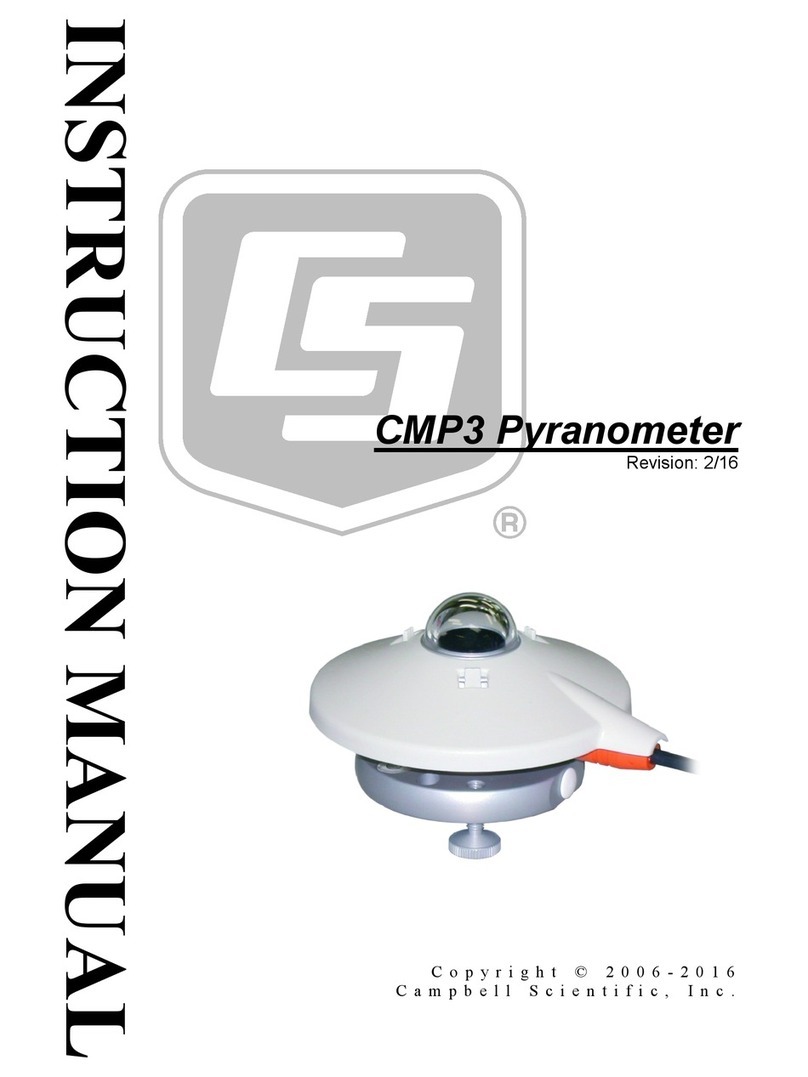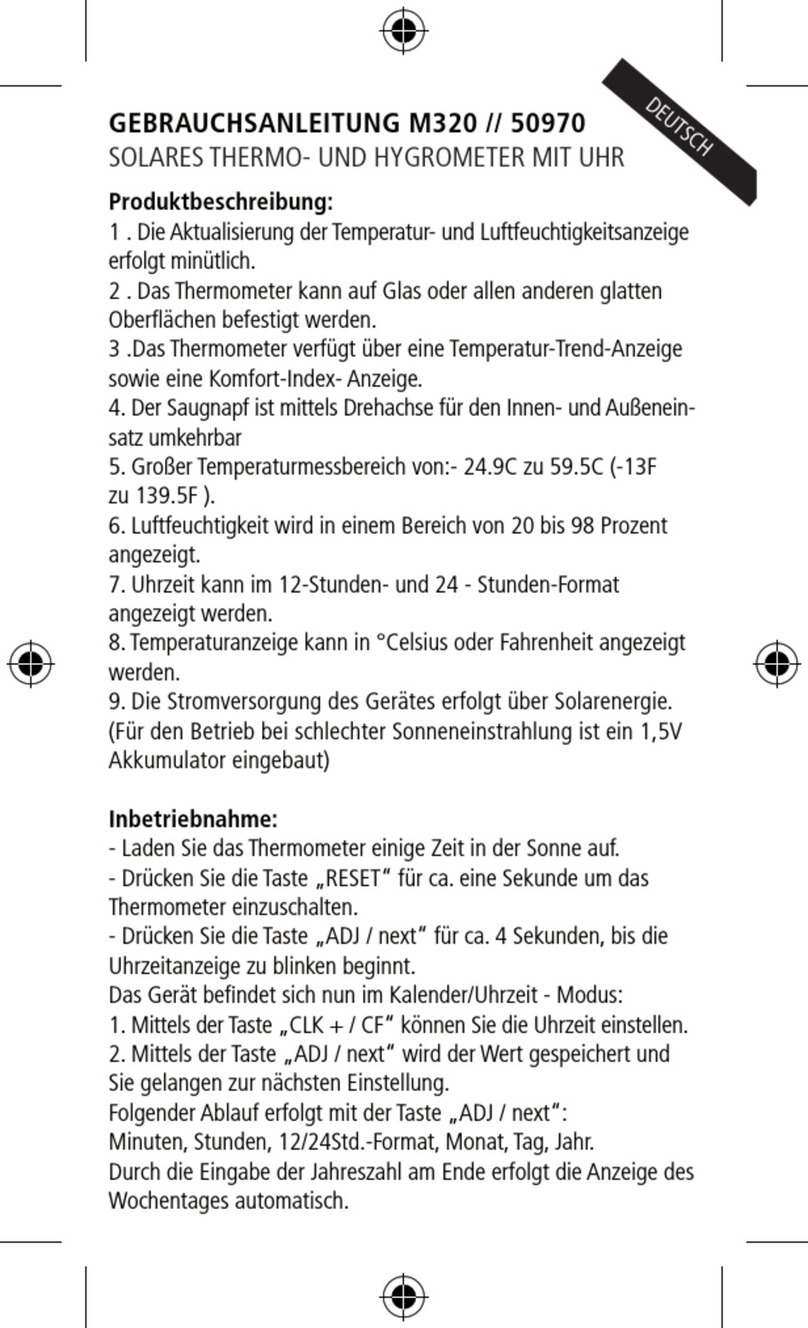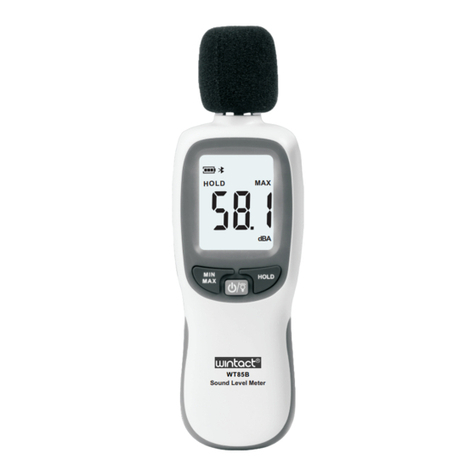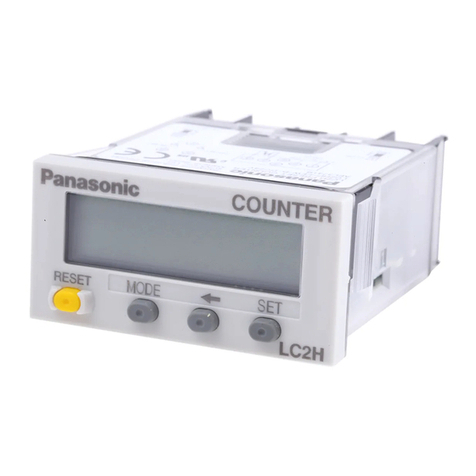DATASONICS PSA-916 User manual

Datasonics, Inc.
PSA-916 Sonar Altimeter
User’s Manual
Rev. March 1997
Datasonics, Inc.
P.O. Box 8 - 1400 Route 28A
Cataumet, MA 02534
Telephone: 508/563-5511
Fax: 508/563-9312


PROPERTY OF DATASONICS
The information, descriptions, photos and illustrations in this manual are
the property of Datasonics, Inc. These materials may not be reproduced
or disseminated without the prior written consent of Datasonics.
WARRANTY
Datasonics, Inc. warrants each of its products to be free from defects in
material and workmanship for a period of one year from date of delivery
to the original purchaser.
Obligation under this warranty shall belimited to the repair or, at the sole
discretion of Datasonics, replacement of any product returned to our
Cataumet, Massachusetts, facility or to a Datasonics-authorized field
service facility. All products returned shall be shipped to Datasonics
Freight Prepaid, and shall be returned to the customer Freight Collect.
This warranty does not apply in cases where the equipment
malfunctioned as a result of mishandling or improper operation.
LIABILITY
Datasonics assumes no liability for damages, losses or costs incurred
consequentially through operation or malfunction of any Datasonics
product.
TITLE
Title passes to the buyer on deliver to the carrier at Cataumet,
Massachusetts. Risk of damage or loss following such delivery shall be
on the buyer, and Datasonics shall in no way be responsible for safe
arrival of the shipment. Title shall pass to the buyer regardless of any
provision for payment of freight or insurance by Datasonics, and
regardless of the form of the shipping documents. If the shipment is
consigned to Datasonics, it shall be for the purpose of securing the
buyer's obligations under the contract.
CHANGES
Datasonics reserves the right to make changes in design or
specifications at any time without incurring any obligation to modify
previously installed units.
This manual is provided for informational and reference purposes only
and is subject to change without notice.

DATASONICS
PSA-916 Sonar Altimeter March 1997
PREFACE
Congratulations on purchasing a Datasonics PSA-916 Precision Sonar
Altimeter.
This User Manual provides complete instructions on using and maintaining
the PSA-916. Please read it prior to deploying the equipment and keep it
where it can provide a reference during setup and operation of the altimeter.

CUSTOMER FEEDBACK FORM
We appreciate any suggestions you may have for making Datasonics
products more useful to you and other users, including comments about the
PSA-916unititself,thewaytheequipmentis packagedanddeliveredand the
quality of this User's Manual. Please use this Customer Feedback Form to
identifyanyareaswhere wecanmake improvements.Forreturningthis form,
you will receive a complimentary gift from Datasonics
Copy this page to provide individual forms. Please reference page and figure
numbers where applicable.
Please mail this form to:
Datasonics, Inc.
Customer Service
P.O. Box 8 - 1400 Route 28A
Cataumet, Massachusetts 02534
Or fax the form to: 508-563-9312.
Customer Name:
Name of Individual Completing Form:
Model Number
Unit Serial Number
Date:
Comments:

DATASONICS
PSA-916 Sonar Altimeter March 1997
Table of Contents
Section 1. Overview........................................................................................................... 1
Applications .........................................................................................................................2
Section 2. Specifications of Unit.................................................................................... 2-1
Section 3. Setup and Deployment..................................................................................... 1
Unpacking and Disassembly ...............................................................................................1
Connection ...........................................................................................................................2
Connector Pin-out ...........................................................................................................2
RS-232 Output ................................................................................................................3
Error Output ....................................................................................................................4
Analog Output .................................................................................................................4
External Key ...................................................................................................................4
Configuration .......................................................................................................................5
Predeployment .....................................................................................................................5
Deployment .........................................................................................................................6
Maintenance ........................................................................................................................7
Section 4. Theory of Operation ..................................................................................... 4-1
Operating Principle ...........................................................................................................4-1
Board level description .....................................................................................................4-1
Power Supply ...............................................................................................................4-2
Transmitter ...................................................................................................................4-2
Receiver .......................................................................................................................4-2
Microcontroller ............................................................................................................4-3
Firmware Description .......................................................................................................4-3
Main Program ..............................................................................................................4-3
Averaging Algorithm ...................................................................................................4-4
Diagnostics .......................................................................................................................4-4
Analog output ..............................................................................................................4-4
Test Points ....................................................................................................................4-5
Error Message ..............................................................................................................4-5
Section 5. Packing List................................................................................................... 5-1

1-1 DATASONICS
User’s Manual March 1997
Section 1. Overview
ThePSA-916isamicroprocessor-controlled,self-contained,underwater
acoustic product. It generates a narrow beam acoustic signal and
measures the travel time for the signal to bounce back from the target
surface. The unit provides range data in both analog and digital formats
for analysis and process control.
The PSA-916 is housed in a corrosion-resistant anodized aluminum
pressure case.It is O-ring-sealed andrated for operationin water depths
up to 2,500 meters. The external 6-pin connector provides connections
for external power source input, external key source input, analog and
RS-232 output.
Figure 1-1 PSA-916 Sonar Altimeter

PSA-916 Sonar Altimeter 1-2
Overview Applications
1.1 Applications
The Model PSA-916 with the built-in flexibility of its microprocessor design,
cost-effectively meets a wide variety of sonar measurement applications with
a single self-contained instrument.
The most common use of the Model PSA-916 Sonar Altimeter is for altitude
measurement (height above bottom). Other uses include:
!Wave height measurement
!Obstacle avoidance
!Altitude of an ROV and other submersibles
!Surveying of shallow waters
!Sediment transport studies

2-1 DATASONICS
Volume I System Manual March 1997
Section 2. Specifications of Unit
TRANSMIT FREQUENCY: 200 kHz
TRANSMIT PULSE WIDTH: 250 microseconds
BEAM PATTERN: 14° conical
PULSE REPETITION RATE: Selectable: Internal or External
Internal - 5 pulses per second
External - customer controlled rate, up to 5
pulses per second
RANGE: 100 meters full scale; 1.0 meter guaranteed
minimum; 0.8 meter typical
ANALOG OUTPUT: 0 to 5 VDC
DIGITAL OUTPUT: RS-232, baud rate 9600, 4800, 2400 or 1200,
(user selectable)
RESOLUTION: RS-232: 1 cm
Analog: 2.5 cm
POWER REQUIREMENT: 6 to 24 VDC
CURRENT: 50 ma @ 15 VDC
100 MA @ 6 VDC
OPERATING DEPTH: 2,500 meters
CONNECTOR: Part Number: Impulse XSG-6-BCL-3/4-16
MATING PIGTAIL: Part Number: Impulse RMG-6-FS
DIMENSIONS: 2 1/4 in. OD x 9 in. long
WEIGHT: In Air: 1.4 lbs
In Water: 0.8 lbs

PSA-916 Sonar Altimeter 2-2
Specifications of Unit
Configuration:
Standard ______
FSI Mode ______
Custom ______
Note: The configuration is set by the dip switches. This page describes how the unit
was configured when shipped to you. Any changes to the dip switches will
change the configuration. Refer to Section 3.3.
Table 6.1
Configuration Standard FSI Mode Custom
Description of Configuration
Key (SW 1 & 2) Internal External
Serial Output (SW 1 & 2) Every Cycle N/A
Gain (SW 3) High High
Under Range Detection (SW 4) Disabled Disabled
Baud (SW 5 & 6) 9600 9600
FSI Mode (SW 7) Disabled Enabled
Dip Switches
SW 1 OFF ON
SW 2 ON OFF
SW 3 ON ON
SW 4 ON ON
SW 5 OFF OFF
SW 6 OFF OFF
SW 7 OFF ON

3-1 DATASONICS
User’s Manual March 1997
Section 3. Setup and Deployment
This section provides information on unpacking, installation and general
operation of the PSA-916.
3.1 Unpacking and Disassembly
As with any sophisticated electronic equipment, Datasonics' products
should be handled with a reasonable amount of care when unpacking,
transporting or storing.
When shipped from the factory, the units are packed in weatherproof
cartons. Every effort is made at the factory to pack the equipment so as
to protect it during shipment and to minimize the effect of any
mishandling.
Carefully inspect each instrument for physical damage as it is unpacked.
Report any damage to the freight carrier and to the Datasonics sales
office,at thenumberlistedbelow.Storetheshippingcartonsandpacking
materials in a cool, dry place for later use in system transport.
The unit is shipped completely assembled and internally configured.
Should an internal inspection be deemed necessary, the unit can be
opened by turning the delrin closure ring counterclockwise. The
transducer and electronics should slide easily from the pressure case.
Caution is advised as the electronics is connected to the interface
connector at the opposite end of the pressure case.
NOTE -- A double O-ring seal is designed into the pressure case/end cap to
protect the electronic components from moisture. A failure of these
seals will result in the unit flooding and subsequent loss.Whenever
the unit is disassembled, carefully inspect the O- rings for cracks,
tears, and proper fit. Replace any damaged O-rings. The end cap
O-ring grooves and housing O-ring mating faces should also be
checked for tool marks or abrasions.

PSA-916 Sonar Altimeter 3-2
Setup and Deployment Connection
Prior to reassembling the unit, clean o-rings and o-ring surfaces, applya coat
of silicone lubricant to the O-rings. Reposition the internal components in the
casing and tighten the closure ring, turning it in a clockwise fashion.
WARNING --DO NOT apply excessive torque to the closure ring. Over-tightening of the
closure ring could damage the ring and make any future disassembly
difficult.
If you suspect that there are items missing, or if you suspect that there has
been any damage to the equipment, contact Datasonics immediately.
3.2 Connection
The PSA-916 outputs data and receives power through a 6 pin connector.
The PSA-916 is supplied with the mating pigtail and a dummy plug.
Whenever the pigtail is not installed, install the dummy plug to protect the
connector pins.
3.2.1 Connector Pin-out
The functional assignments of the six pin connector is as follows:
Pin Number Pigtail Color
(Impulse RMG-6-FS) Function
1 White External key input
2 Black External power ground
3 Blue RS-232 Output/Error Output*
4 Orange Analog output
5 Green Analog output ground
6 Red External power (6 - 24V)

3-3 DATASONICS
User’s Manual March 1997
*To select RS-232 Output install a jumper between JP3 pins 1 & 2. To select Error
Output install a jumper between JP3 pins 2 & 3.
Figure 3-1 Connector view, looking at the PSA-916
3.2.2 RS-232 Output
The RS-232 output is set to the following parameters:
Baud:1200,2400,4800, or 9600 user selectable
Number of Data Bits:8
Number of Stop Bits:1
Parity:none
On power up the following banner message will be output:
“Datasonics PSA-916 V1.2"
Where the number following the V is the firmware version.
The serial output will be in the following format:
Rxx.xx<cr><lf>
1
5
4
3
2
6

PSA-916 Sonar Altimeter 3-4
Setup and Deployment Connection
where xx.xx can range from 0.80 to 99.99. If no echo was received the output
will be R99.99E<cr><lf>. If an echo was missed or the value does not meet
the averaging criteria then an “E” will be appended to the previous value. If
under range detection is selected and the value is under range then a ‘<’ will
be appended to the data.
If the unit is not functioning correctly, “E1,<cr><lf>” will be output. If this
occurs see section 4.4.3.
3.2.3 Error Output
Thisoutput isusefulforindicatingthevalidityof thedata whenevertheanalog
output is the source of range output. This line will be a logic 1 (5 volts)
whenever no echo was detected in the last range interrogation cycle. If
averaging is enabled and the data does not meet the averaging criteria then
this line will be high. Essentially this line is high whenever it would be
necessary to output an E on the serial output. This line also goes high if error
condition E1 occurs. If this line is low it can be assumed that the altimeter is
functioning normally and the analog output is valid.
3.2.4 Analog Output
The analog output ranges from 0 VDC to 4.98 VDC, Which represents 0.00
to 99.99 meters. Note that if no echo is received,the outputwill go tofull scale
(4.98 VDC).
3.2.5 External Key
This line is used to tell the PSA-916 to take a range reading. The altimeter
looks for a transition from a logic 1 (5 volts) to a logic 0 (0 volts). Once the
transition is detected the altimeter will take a range reading and wait 200ms
before looking for the next transition. Thus the minimum time between key
pulses is 200ms. However there is no maximumlimit to the time between key
pulses. Note that the analog value will be valid 200ms after sending the
external key.

3-5 DATASONICS
User’s Manual March 1997
3.3 Configuration
There are seven switches which determine the mode of operation. The
different combinations are listed in the table below.
DIP SWITCHES - All dip switch changes will take affect immediately, except
for the baud rate. To change baud rate the unit must be reset(i.e. cycle pwr).
3.4 Predeployment
Always test the altimeter immediately before deployment to ensure that the
unit can transmit and receive acoustic signals and that the system
parameters are correctly set.
Description SW1 SW2 SW3 SW4 SW5 SW6 SW7 SW8
Test mode - see section 4.4 ON ON
External key - 200 MS min. between keys ON OFF
Internal key - serial out every depth cycle OFF ON
Internal key - serial out every fifth depth cycle OFF OFF
More gain ON
Less gain OFF
Disable under-range detection ON
Under-range detection (if range is less than
0.8, then output is ’0.8<’) OFF
1200 baud (rep rate may be > 200ms) ON ON
2400 baud ON OFF
4800 baud OFF ON
9600 baud OFF OFF
RS-232 off ON
RS-232 on OFF
FSI mode disabled OFF
FSI mode enabled ON

PSA-916 Sonar Altimeter 3-6
Setup and Deployment Deployment
NOTE: Always test the operation of each PSA-916 as a stand-alone instrument before
integrating it into another system.
Datasonics recommends that an in-air test be performed followed by a short
range in-water test prior to the actual deployment.
A major source of problems with acoustic equipment is that the transducer is
not clean and acoustic signals are masked. We strongly recommend that
prior to each deployment that the user clean the exterior of the pressure
casing and transducer with fresh water and a mild detergent. Do not use
glass cleaner.
To perform the in-air test:
!Turn the altimeter ON by applying power.
!Verify that the RS-232 output is 99.99E and that the analog output is
4.98V. Note that if under-range detection is enabled, verify the RS-232
output is’0.8<’ and the analog output is 39.8 mv.
!If under-range detection is not enabled, tap on transducer face with fin-
ger, and verify that the RS-232 and analog output changes.
If the in-air test was successfully completed, proceed to an in-water test.
Make sure the transducer is well below the keel of the boat and away from
prop wash and noise. A test tank or barrel filled with water can be used
provided the water depth is at least three feet.
3.5 Deployment
Once you are confident that the unit is operating properly on its own, you can
then integrate it with other instrumentation used in your application.
If acoustic energy generated by other instruments is strong enough, it can
adversely affect PSA-916 operation, even if the acoustic output of the other
instrumentation is at different frequencies. You may have to relocate or
reposition the PSA-916 to achieve reliable results.

3-7 DATASONICS
User’s Manual March 1997
Make sure sources of noise and turbulence such as the boat propeller and
ROV truster motorsare not between the altimeter and the target surface,and
that they are well away from the transducer.
Securely fasten the PSA-916 to its platform, vehicle or instrument package,
making sure there are no obstructions between the transducer face and the
intended target. When mounting be sure the anodize is not scratched or
gouged by clamps, bolts, etc.
If the unit is mounted on an underwater vehicle, be sure that the sound beam
path is perpendicular to the horizontal flying position of the vehicle. Note that
excessivepitchorrollmotionwillinfluencethePSA-916rangemeasurement.
The PSA-916 radiation pattern is 14°.
Make sure the altimeter is attached to the bottom of the ROV so that it is not
affected by echos from the skids.
In applications using multiple altimeters within each others range, their
transmissions should be externally triggered to avoid crosstalk between the
units.
The sound beam pattern is an important consideration. The pattern consists
of the main beam and small side lobes stemming from it. Certain conditions
may cause range errors from sidelobe reflections.
!A strong acoustic reflector close to the instrument reflects a side lobe sig-
nal before the main beam echo is received.
!When using a towed vehicle to measure depth, a steep slope reflects the
side lobe before the main beam is reflected by the bottom directly below
the instrument.
!The side lobe reflects off the bottom before a main beam aimed diago-
nally at the seabed.
3.6 Maintenance
If you exercise reasonable care, your Datasonics products should provide
you with years of reliable service.

PSA-916 Sonar Altimeter 3-8
Setup and Deployment Maintenance
To ensure an even greater level of reliability, Datasonics recommends that
you take a few preventive maintenance measures and that you contact
Datasonics early in your efforts to troubleshoot an altimeter malfunction. We
have found that most problems are related to the acoustic environment and
can be solved with applications planning and pre-deployment testing.
The following steps will help you maintain protection against damage to the
altimeter.
When you retrieve the unit at the completion of a project, follow these
preventive maintenance procedures:
!Turn the unit OFF by unplugging the mating connector.
!Clean the exterior of the pressure casing and transducer with fresh water
and a mild detergent. Do not use glass cleaner.
NOTE: It is important to clean the transducer face so that film does not build up on
the transducer face and attenuate acoustic signals.
!Dry the unit with a cloth.
!Inspect the transducer and the exterior of the casing for signs of wear
and damage.
!Clean the connector on the unit using a lint free alcohol wipe.
!Lubricate the connector o-ring mating surface with a light coat of silicone
and place the protective dummy plug on the connector.
!Store the unit, in its original packing case, in a cool, dry place.

4-1 DATASONICS
User’s Manual March 1997
Section 4. Theory of Operation
ThissectiondescribestheoperationofthePSA-916.DONOTATTEMPT
REPAIR of the PSA-916 unless you are a trained electronics technician.
For help with any questions about using or maintaining the instrument,
contact your local Datasonics representative, or call our headquarters at
508/563-5511.
4.1 Operating Principle
The PSA-916 Sonar altimeter determines the round trip time for a sound
pulse to travel from the transducer through the water, reflecting off a
surface and returning to the transducer. Since the speed of sound is
known, the altimeter can determine the range utilizing this equation:
R = 1/2 (Cs)(t +/-∆t)
Where:
Cs - the speed of sound in meters per second
t - the total round-trip travel time in seconds
R - range in meters
The nominal speed of sound is 1,500 meters per second in water, and is
used by the PSA-916. Note that the speed of sound is affected by
temperature, salinity, and pressure.
The ∆ t factor is the jitter or the ability of the detectors to accurately
determine the presence or absence of a pulse. Jitter is a function of
operating frequency, system bandwidth and signal to noise ratio. In the
PSA-916 ∆t is approximately 5 microsecondsor approximately +/-0.4 cm
total distance. Since the total travel time is divided by two in the above
formula, the jitter error is +/-0.2cm.
4.2 Board level description
Please refer to drawings D916-07008 and C916-06812
Table of contents


